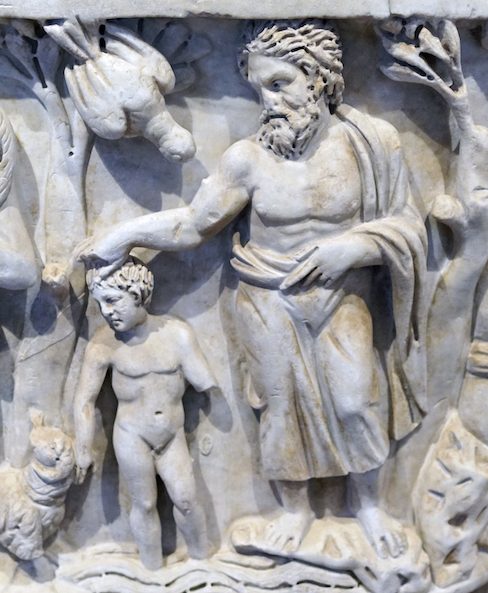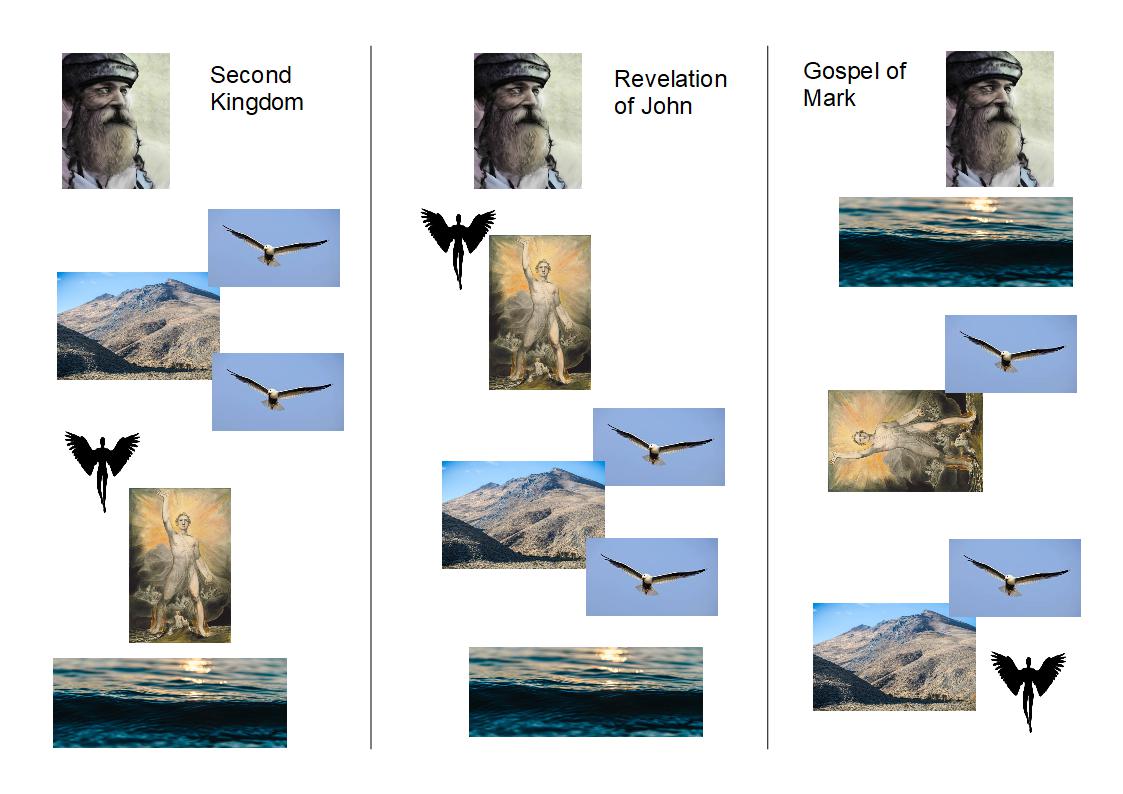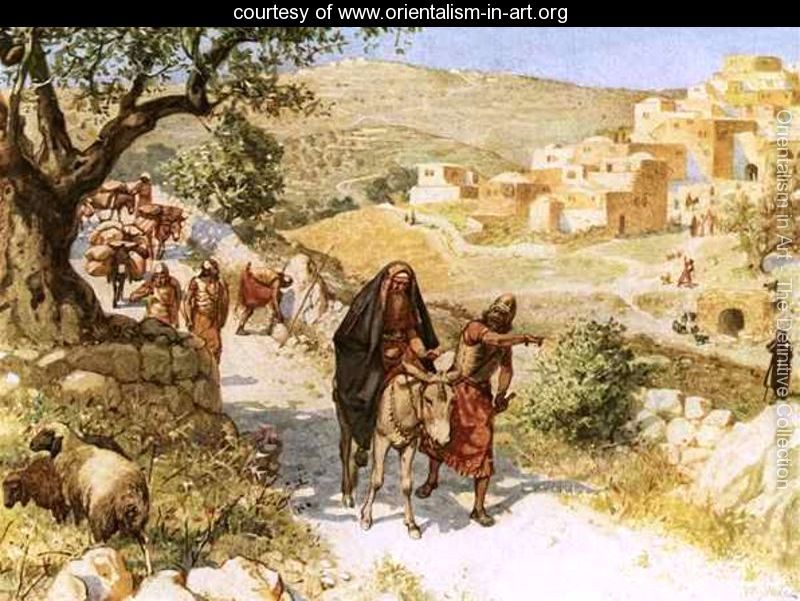This post is a follow up from Jesus’ Baptism in the Context of the Myth of Water, Flight and Wilderness. I may come to see this attempt to compare the structures of the myths as a sad misadventure but till then, let’s see what happens.

We begin with the “gnostic myth” of the advent of an illuminator or saviour figure that was announced by the second kingdom:
1. A prophet is said to be the beginning of the saviour figure who is presented as a child.
2. A bird takes the saviour to a mountain, presumably a wilderness setting
3. The bird nourishes the child saviour in the mountain
4. Presumably after the child has become an adult an angel appears to declare the saviour figure now has power and glory
5. The figure comes to the water.
The image below attempts to illustrate that particular structure. (For the understanding of coming “upon” water as an expression relating to power and submission see the previous post.)
Next, look at a similar myth in the Book of Revelation, though we will simplify it for starters. This structure is illustrated in the middle column.
1. The prophet John is writing, or announcing, the advent of the child saviour figure from the time he is born.
2. An angelic voice declares that great power and glory has now come into being, presumably a proleptic announcement concerning the child. (The mother and child are separated; the mother will be a proxy for those who follow the saviour-child).
3. A bird (eagle) carries the mother of the child to the wilderness
4. The woman is nourished and cared for in the wilderness (by….?)
5. The water of chaos, a flood, attempts to destroy the woman but she is protected by the wilderness earth.
The larger structure is essentially the same as the gnostic myth but the middle two steps are reversed. This reversal appears to be a function of the splitting of the child from its mother (and rest of her seed).
The structure the previous two myths is completely inverted with the Gospel of Mark. Coming to the water or facing the water is now moved to the beginning, along with the prophet, and is no longer the culmination of the story. In this gospel the water has become a symbol of baptism which is a figure of the death of the old man (as per Paul). In the Gospel of Mark we have the narrative bookended by narratives of death and emergence from death, first symbolically in the water, then finally through the cross.
1. The prophet announces the advent of the man saviour.
2. The saviour figure comes to the water and as he emerges from it.
3. The saviour figure is addressed as a sacrificial victim — the inverse of the power and glory we saw in the other two myths. For “my beloved son” as a signal of a son to be sacrificed see Jon Levenson’s studies on the Death and Resurrection of the Beloved Son. But the power and glory is still latent because the saviour figure is still the son of God.
4. The spirit (identified as a bird, in this case the dove) drives or propels the saviour figure into the wilderness.
5. The saviour figure is nourished by angels in the wilderness. (Matthew and Luke add the mountain.)
The angels and the bird take on inverted meanings. The angels feed and nourish the saviour in the wilderness, thus doing enough merely to keep him alive after his long fast and encounter with Satan. There is no roaring declaration of the saviour being imbued with power and glory.
The bird has changed from an eagle to a dove. The eagle had the power to rescue and carry a person in flight. The dove drives the saviour figure into the wilderness but has already come to him at the moment he is declared to be the beloved son (for sacrifice).
The Gospel of Mark may be thought of as inverting the rival myths of a messiah or saviour coming with great power. The water has become a means of symbolic death and birth as a “beloved son” destined to be sacrificed.
The earlier myth of power is not completely displaced, however. We see the saviour figure in the wilderness nourishing his followers by the thousands; he then ascendes a mountain before returning to walk upon the water to his disciples. Several details of this narrative indicate it is to be understood as a theophany, or perhaps even originally a post-resurrection appearance. The myth of power is not completely replaced but it is supplemented by an inverted form of the myth to take place first.


